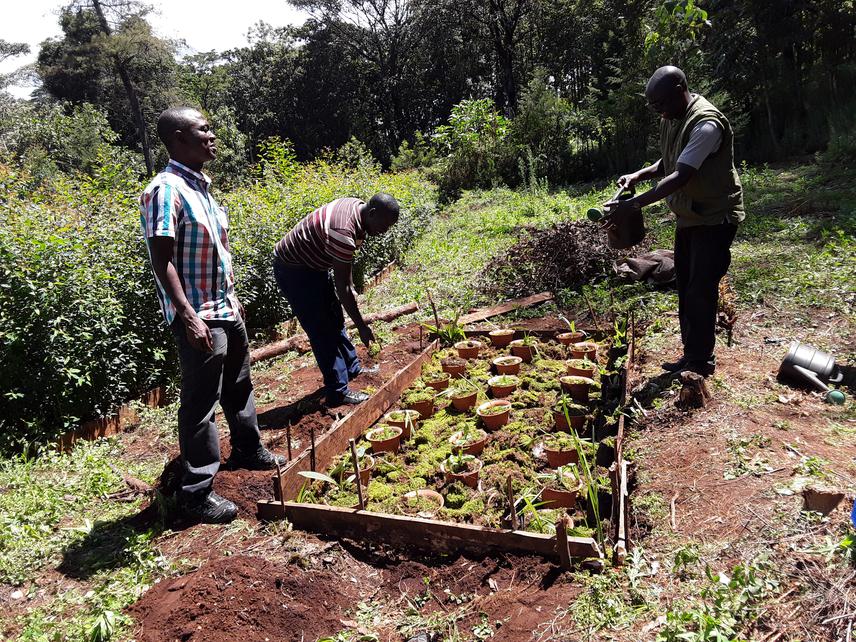Fanuel Kawaka
Other projects
18 Mar 2015
Integrating the Local Community in the Conservation of Wild Orchids in Kericho Forest, Kenya
16 Jun 2016
Integrating Local Schools in the Conservation of Wild Orchids in Kericho Forest, Kenya
24 Aug 2017
Integration of the Local Community and Schools in the Conservation of Wild Orchids in Kenya
17 Dec 2021
Validation and Up-Scaling Community Best Practices in Conservation of IUCN Red-listed Wild Orchids in Kenya
The current project proposes to adopt a tested conservation model that simultaneously integrates local community and schools in protecting endemic wild orchid plants in the northern block of Mau Forest Complex (MFC). Ecological surveys will be conducted to map out the exact location of wild orchids in the forest, their distribution, conservation status and diversity. The local community and school learners will be trained on ex situ and in situ conservation of orchid germplasm, setting up nature trails, home gardens and nurseries as a strategy to support their conservation. Any extra rescued orchid germplasm from the forest will be taken to the National Genebank of Kenya (NGBK) and the National Museums of Kenya (NMK) orchid house for propagation and storage. These conservation activities will improve the diversity and population of wild orchids in the MFC for future conservation research.

Mau Forest Complex is amongst the richest yet least studied in terms of orchid diversity, containing some endemic and endangered orchid species that are classified in the IUCN Red List. These orchids are threatened by climate change, local community over-exploitation, habitat loss and fragmentation. Local community living around the MFC use wild orchids for food, medicine, and food flavours while their beautiful flowers are an important economic resource in the global horticultural and food industry. Locally, orchid harvesting is associated with forest burning, resulting in the destruction of other forest biodiversity. Illegal community conversion of forests into agricultural land and establishing planted forests continue to threaten the survival of forest orchids.
The current project proposes to adopt a tested conservation model that simultaneously integrates local community and schools in protecting endemic wild orchid plants in the northern block of Mau Forest Complex (MFC). The Conservation Model will reduce the cost, implementation period and reach a higher population because community and school activities will be carried out concurrently. Ecological surveys will be conducted to map out the exact location of wild orchids in the forest, their distribution, conservation status and diversity. The local community and school learners will be trained on ex situ and in situ conservation of orchid germplasm, setting up nature trails, home gardens and nurseries as a strategy to support their conservation. In addition, local schools and community will be empowered to carry out regular forest scouting and patrols to rescue the fallen orchids (those on dead trees) and re-establish them on indigenous host trees in the forest. Rescued orchid plants from fallen trees in the forest will serve as a source of plantlets for school- and home-based gardens, nature trails and seed banks. Any extra rescued orchid germplasm from the forest will be taken to the National Genebank of Kenya (NGBK) and the National Museums of Kenya (NMK) orchid house for propagation and storage. These combined programmes will make the community appreciate the value of biodiversity and improve the conservation of orchids for future research.